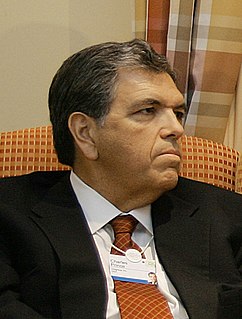
The House of Bonaparte was an imperial and royal European dynasty of Italian origin. It was founded in 1804 by Napoleon I, the son of Genoese nobleman Carlo Buonaparte. Napoleon was a French military leader who had risen to power during the French Revolution and who in 1804 transformed the First French Republic into the First French Empire, five years after his coup d'état of November 1799. Napoleon turned the Grande Armée against every major European power and dominated continental Europe through a series of military victories during the Napoleonic Wars. He installed members of his family on the thrones of client states, extending the power of the dynasty.
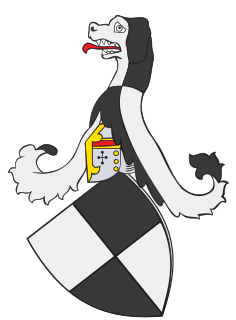
The House of Hohenzollern [ˈhoːəntsɔlɐn] is a German dynasty of former princes, electors, kings and emperors of Hohenzollern, Brandenburg, Prussia, the German Empire, and Romania. The family arose in the area around the town of Hechingen in Swabia during the 11th century and took their name from Hohenzollern Castle. The first ancestors of the Hohenzollerns were mentioned in 1061.

Diana, Princess of Wales, was a member of the British royal family. She was the first wife of Charles, Prince of Wales, and the mother of Prince William, Duke of Cambridge, and Prince Harry, Duke of Sussex.

Prince of Wales was a title granted to princes born in Wales from the 12th century onwards; the term replaced the use of the word king. One of the last Welsh princes, Llywelyn ap Gruffudd, was killed in battle in 1282 by Edward I, King of England, whose son Edward was invested as the first English Prince of Wales in 1301.

Charles Edward Louis John Casimir Sylvester Severino Maria Stuart was the elder son of James Francis Edward Stuart, grandson of James II and VII and after 1766 the Stuart claimant to the throne of Great Britain. During his lifetime, he was also known as "The Young Pretender" or "The Young Chevalier" and in popular memory as "Bonnie Prince Charlie". He is best remembered for his role in the 1745 rising; his defeat at Culloden in April 1746 effectively ended the Stuart cause, and subsequent attempts failed to materialise. His escape from Scotland after the uprising led him to be portrayed as a romantic figure of heroic failure in later representations.

Prince Philip, Duke of Edinburgh, is the husband of Elizabeth II, Queen of the United Kingdom.

Prince William, Duke of Cambridge, is a member of the British royal family. He is the elder son of Charles, Prince of Wales, and Diana, Princess of Wales. Since birth, he has been second in the line to succeed his grandmother Elizabeth II, who is queen of the United Kingdom and 15 other Commonwealth realms.
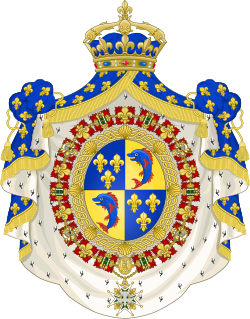
Dauphin of France, originally Dauphin of Viennois, was the title given to the heir apparent to the throne of France from 1350 to 1791 and 1824 to 1830. The word dauphin is French for dolphin. At first the heirs were granted the County of Viennois (Dauphiné) to rule, but eventually only the title was granted.
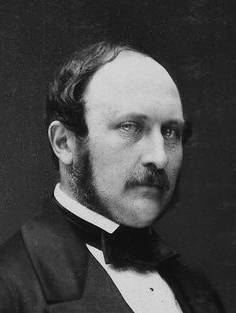
Prince Albert of Saxe-Coburg and Gotha was the husband of Queen Victoria.

Charles, Prince of Wales is the heir apparent to the British throne as the eldest child of Queen Elizabeth II. He has been Duke of Cornwall and Duke of Rothesay since 1952, and is the oldest and longest-serving heir apparent in British history. He is also the longest-serving Prince of Wales, having held that title since 1958.

The House of Bernadotte is the royal house of Sweden, which has reigned since 1818. Between 1818 and 1905, it was also the royal house of Norway. Its founder Charles XIV John of Sweden, born a Frenchman as Jean Bernadotte, was adopted by the elderly King Charles XIII of Sweden, who had no other heir and whose Holstein-Gottorp branch of the House of Oldenburg thus was soon to be extinct.

Camilla, Duchess of Cornwall, is a member of the British royal family. She is the second wife of Charles, Prince of Wales, heir apparent to the British throne. Instead of using the title Princess of Wales, she uses the title Duchess of Cornwall, her husband's secondary designation. In Scotland, she is known as the Duchess of Rothesay.
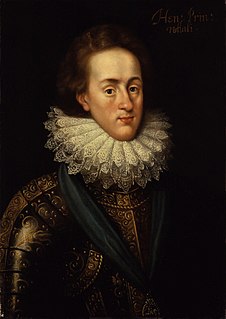
Henry Frederick, Prince of Wales was the elder son of James VI and I, King of England and Scotland, and his wife, Anne of Denmark. His name derives from his grandfathers: Henry Stuart, Lord Darnley, and Frederick II of Denmark. Prince Henry was widely seen as a bright and promising heir to his father's thrones. However, at the age of 18, he predeceased his father when he died of typhoid fever. His younger brother Charles succeeded him as heir apparent to the English, Irish and Scottish thrones.
An heir apparent or heiress apparent is a person who is first in a line of succession and cannot be displaced from inheriting by the birth of another person. An heir presumptive, by contrast, is someone who is first in line to inherit a title but who can be displaced by the birth of a more eligible heir.
An heir presumptive is the person entitled to inherit a throne, peerage, or other hereditary honour, but whose position can be displaced by the birth of an heir apparent or of a new heir presumptive with a better claim to the position in question. The position is however subject to law and/or conventions that may alter who is entitled to be heir presumptive.
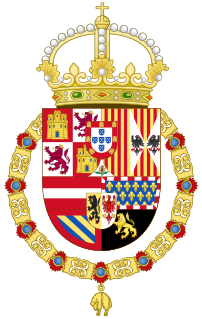
Balthasar Charles, Prince of Asturias, Prince of Girona, Duke of Montblanc, Count of Cervera, and Lord of Balaguer, Prince of Viana was heir apparent to all the kingdoms, states and dominions of the Spanish monarchy until his death.

The House of Saxe-Coburg and Gotha is a German dynasty that ruled the duchy of Saxe-Coburg and Gotha, which was one of the Ernestine duchies. It is a cadet branch of the Saxon House of Wettin.

Prince Charles is a residential neighbourhood in north west Edmonton, Alberta. The area was named in honour of Charles, Prince of Wales.
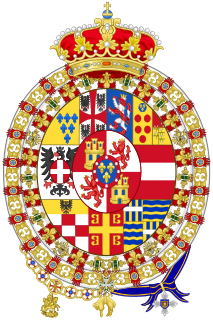
The House of Bourbon-Parma is a cadet branch of the Spanish royal family, whose members once ruled as King of Etruria and as Duke of Parma and Piacenza, Guastalla, and Lucca. The House descended from the French Capetian dynasty in male line. Its name of Bourbon-Parma comes from the main name (Bourbon) and the other (Parma) from the title of Duke of Parma.
The title was held by the Spanish Bourbons as the founder was the great-grandson of Duke Ranuccio II Farnese, Duke of Parma.
Prince Louis of Cambridge is a member of the British royal family. He is the third and youngest child and second son of Prince William, Duke of Cambridge, and Catherine, Duchess of Cambridge. He is fifth in the line of succession to the British throne.
